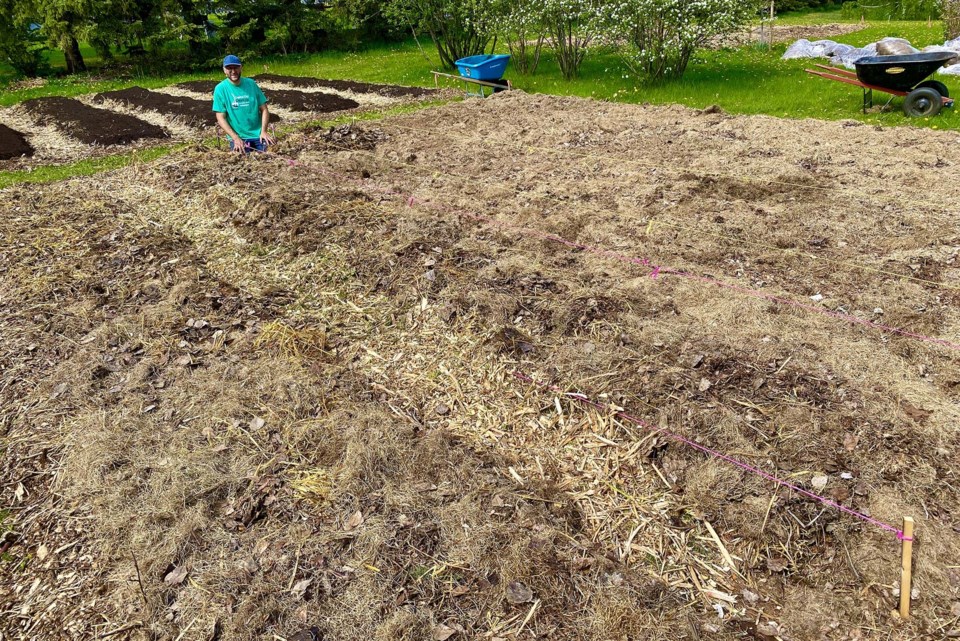Correction
The photo caption for this story misspelled "Porritt" as "Perrott" and "Sylvain" as "Slyvain." It has been updated with the correct spellings.
St. Albert gardeners can celebrate Earth Day this weekend with a conference on how dirt can help green the Earth.
About 50 people will be at the Star of the North Retreat Centre this April 28 for the We Love Gardening conference. Organized in partnership with the St. Albert Backyard Gardening Group, this paid event features workshops and hands-on activities on how gardens can help fight global heating and bolster biodiversity, and is meant to celebrate Earth Day.
It’s a belated celebration, as Earth Day was actually on April 22, acknowledged Clint Porritt, program co-ordinator for Star of the North.
“Earth Day is just one day amongst many, but as we look at the problems associated with climate change, we realize really every day needs to be Earth Day,” Porritt said.
Better Earth through earth
Many sessions at the conference will discuss building soil.
Soil is a mix of sand, silt, clay, and carbon, noted conference speaker Mark Stumpf-Allen, an instructor with the organic master gardener program in Parkland County. Tilling the soil aerates it and helps seeds sprout, but also lets that carbon bind with oxygen to become heat-trapping CO2. It also devastates the fungi and other microbes that live in soil, resulting in more decay and greenhouse gas emissions, less soil productivity, and a hotter planet.
Gardeners can put more carbon back into their soil with compost in the form of straw, dead leaves, and shredded paper, Stumpf-Allen said. The more carbon in your soil, the better your garden grows.
“The most important carbon we want to put in our soil comes from living roots in the form of root exudates,” he continued, referring to sugars and proteins secreted by roots that bind with soil minerals.
These exudates feed the fungi and microbes in dirt that support plants and restore the nutrients we extract when we harvest vegetables, Stumpf-Allen said. His talk at the conference will discuss how to use complementary crops such as legumes and perennial grasses to enhance soil carbon and boost soil nutrients.
Porritt will lead a session on deep-mulch, no-till gardening, which Star of the North volunteers used to build a large community garden.
Instead of tilling the soil to start their garden, Porritt said Star of the North volunteers piled scavenged cardboard, leaves, wood chips, and other forms of compost on top of the existing lawn about eight inches deep and planted their crops right into it. This mountain of mulch acted as a sort of slow-release fertilizer, providing plants with the nutrients they needed without releasing the carbon stored in the yard’s soil.
“We’re building our own soil,” Porritt said, and doing so without artificial pesticides or fertilizers.
Other topics at the conference include pollinators, insect biodiversity, and symbiosis through the Three Sisters (corn, beans, and squash).
Gardeners can reduce plastic waste (the theme of this year’s Earth Day) through reuse, Porritt said. Star of the North gardeners use old paper towel tubes instead of plastic trays to start seedlings, for example, and Popsicle sticks instead of plastic signs to label plant rows. All these materials are compostable as well.
Porritt said Earth Day is a time to reflect on the importance of nature.
“We’re part of this larger circle of life, and we have a huge responsibility to treat the Earth well.”
Tickets to the conference are $20. Visit starofthenorth.ca/gardening for details.




